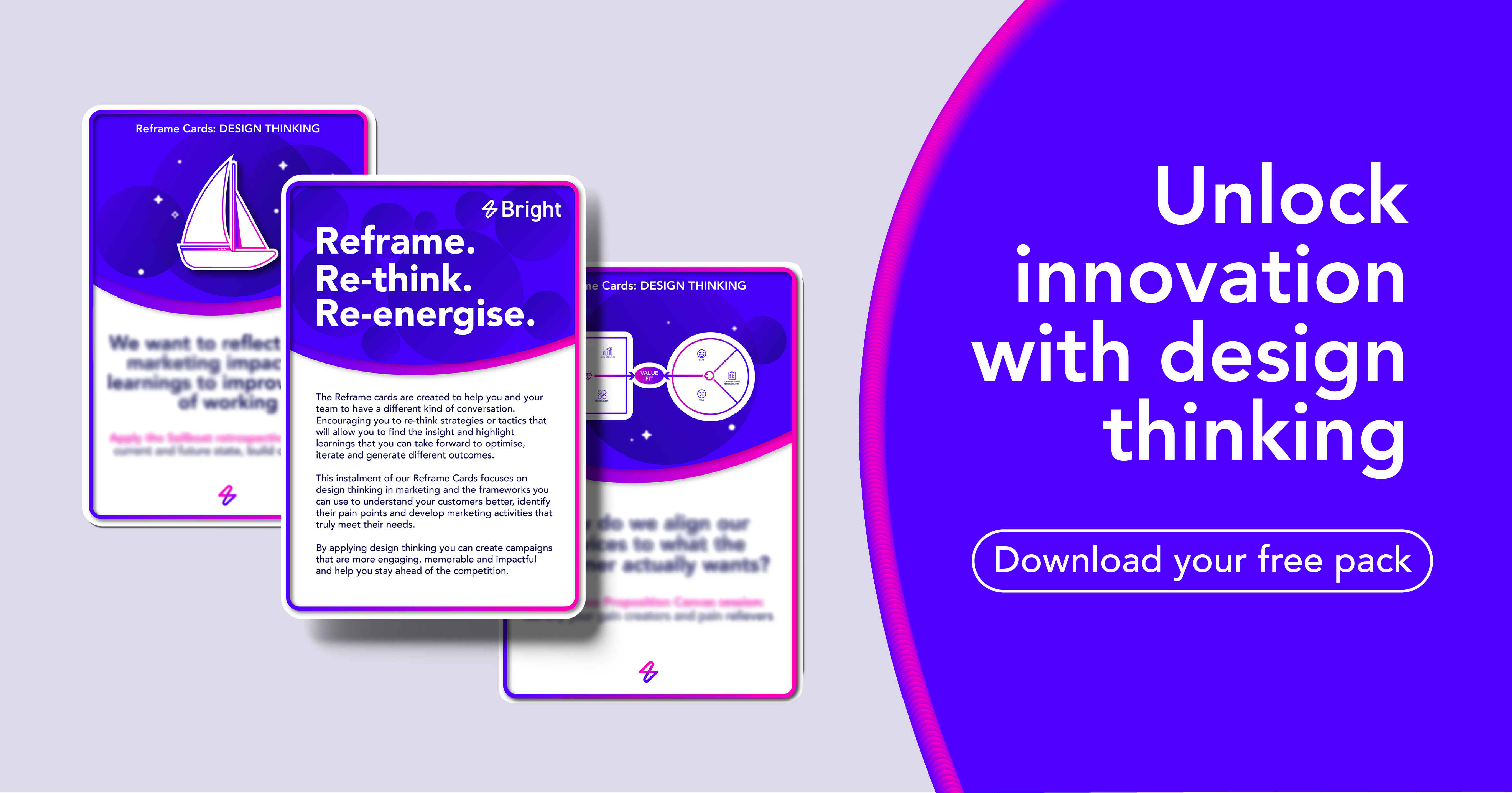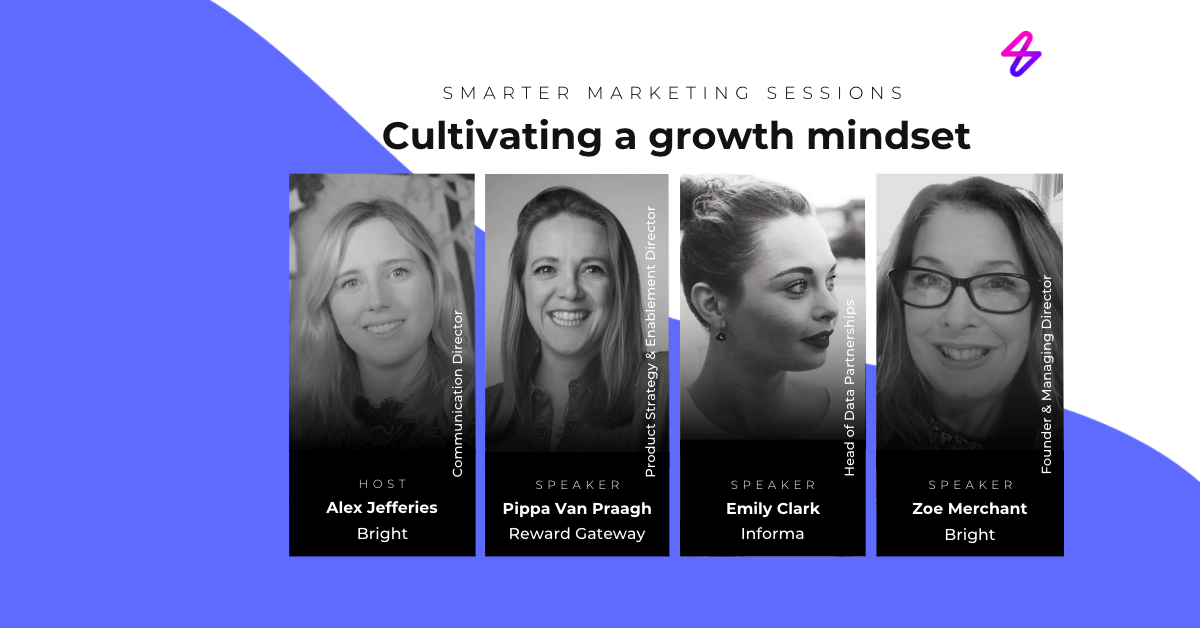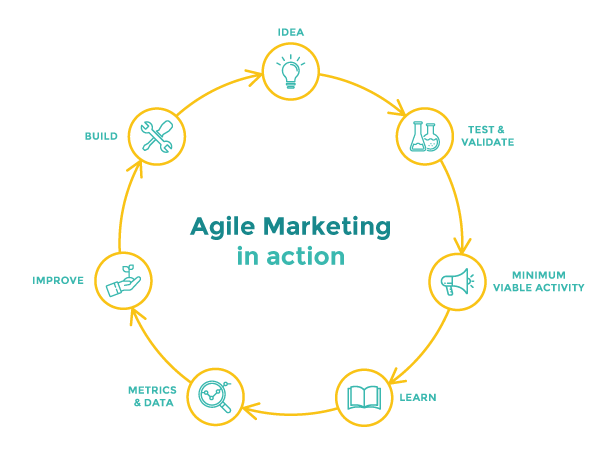
Be more curious, creative, and inject innovation. All things as marketers we’ve constantly been told to do bring to our thinking as we address the challenges of a highly competitive market. Great advice, but how do you actually do it?
We chat to Victoria Hardiment (Marketing Director, Informa Markets) and Neil Preddy (Customer Strategy & Planning Expert) and they reveal how leading marketing teams are using design thinking to inject innovative action into marketing activity.
We want to give you as marketers the power to do great work – check out our Smarter Marketer Event on design thinking; a 40 min panel discussion featuring the savviest marketers in B2B and can help you discover how you can take your marketing to the next level.
Missed the session, watch it on demand!

Access the reframe cards – design thinking edition
Get started with design thinking with our reframe cards – purposely created to help you and your teams utilise design thinking tools and frameworks to better understand your customers, improve team collaboration and optimise marketing effectiveness.
Meet the speakers

Sian Heaphy
Sian uses agile ways of working to help businesses be more creative, curious and use data to transform their marketing and deliver business outcomes.

Lydia Kirby
Lydia is passionate about showing tangible value for marketing and finding creative solutions to business problems. She loves working in partnership with clients and sharing learnings from her work with agile marketing methodology.

Victoria Hardiment
Victoria is an experienced marketer who oversees the marketing strategy and operations of Informa Markets as their marketing director. She has incorporated design thinking into her impressive career, putting the focus on the customer to inform her decisions.

Neil Preddy
Using data to solve problems, find opportunities and make better decisions, Neil is a product leader and marketer with global experience of building analytics and big data platforms for CPG companies and retailers like Unilever, Procter & Gamble, Tesco and Amazon.
Reading List
Watched the panel and interested in hearing more? Check out our extended list of design thinking in marketing resources:
Books:
- The Design Thinking Playbook by Michael Lewrick and Patrick Link – This book offers a step-by-step guide to applying design thinking to solve complex problems in marketing and other areas of business.
- ROI in Marketing: The Design Thinking Approach to Measure, Prove, and Improve the Value of Marketing by Jack J Phillips, Frank Q Fu, Patricia Pullam Philips, Hong Yi – This book provides a framework for using design thinking to measure and improve the ROI of marketing initiatives.
- The Lean Startup by Eric Ries – This book is a classic on how to apply the principles of lean startup methodology to create and launch successful products or services.
- Value Proposition Design by Alexander Osterwalder, Yves Pigneur, Gregory Bernarda, Alan Smith – This book offers a practical guide to creating compelling value propositions using design thinking so they resonate with customers and drive business growth.
- The Design Thinking Toolbox by Michael Lewrick, Patrick Link, Larry J. Leifer – This book offers a comprehensive set of design thinking tools and techniques for solving business problems, including marketing challenges.
- Alchemy: The Magic of Original Thinking in a World of Mind-Numbing Conformity by Rory Sutherland – a recommendation from panelist Neil Preddy, discover the alchemy behind original thinking, as TED Talk superstar and Ogilvy advertising legend Rory Sutherland reveals why abandoning logic and casting aside rationality is the best way to solve any problem.
Articles, podcasts, and videos:
- DOAC: E165: The Marketing Secrets Apple & Tesla Always Use: Rory Sutherland – In this podcast episode, Rory Sutherland shares his insights on how Apple and Tesla apply design thinking principles to create successful marketing campaigns.
- Design Thinking 101 hosted by Dawan Stanford – This podcast series features interviews with design thinking experts and practitioners, offering insights and best practices for applying design thinking in various contexts, including marketing.
- Design Together hosted by Abby Guido – This podcast series focuses on how design thinking can be applied to solve complex problems in business, including marketing challenges.
- Telling More Compelling Stories Through Design Thinking by Tai Tran – In this article, Tai Tran shares his insights on how design thinking can help marketers create more engaging and impactful brand stories.









 The Process
The Process
